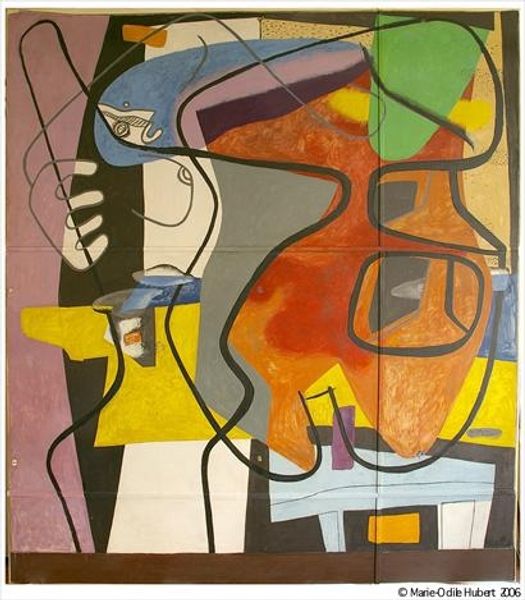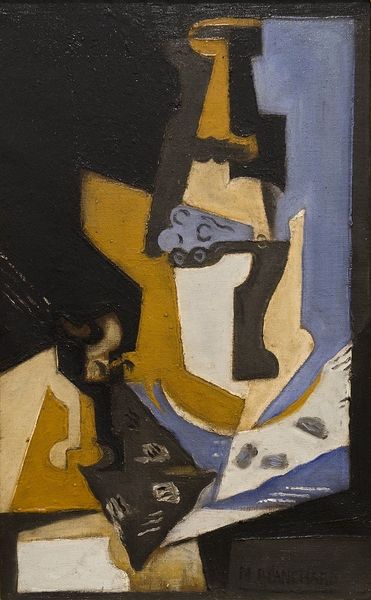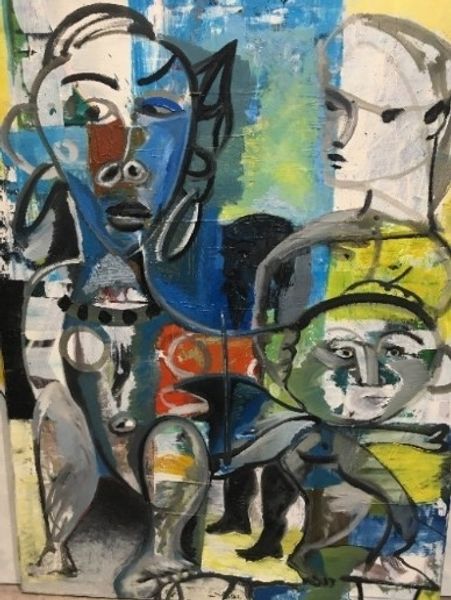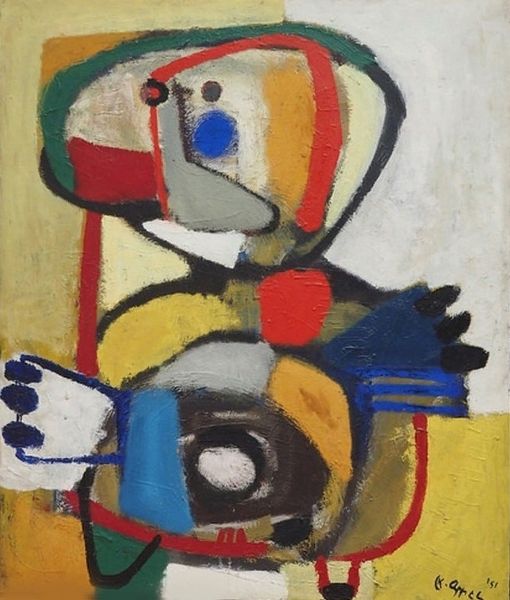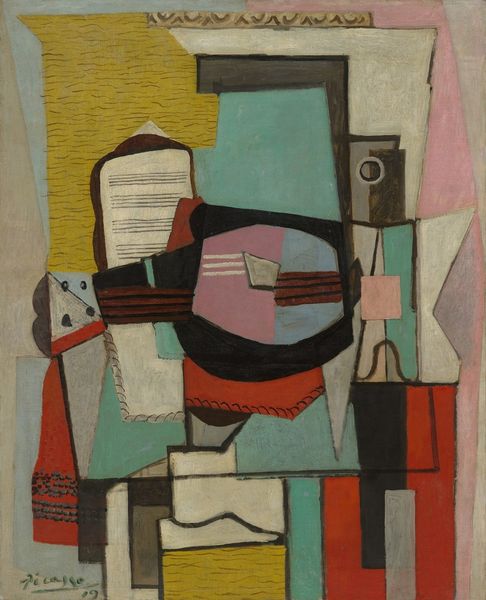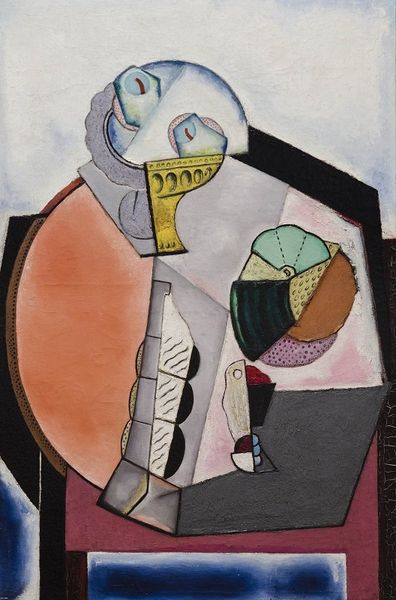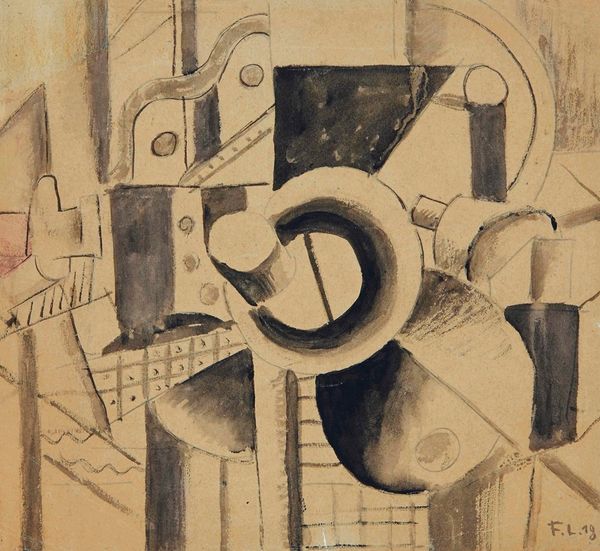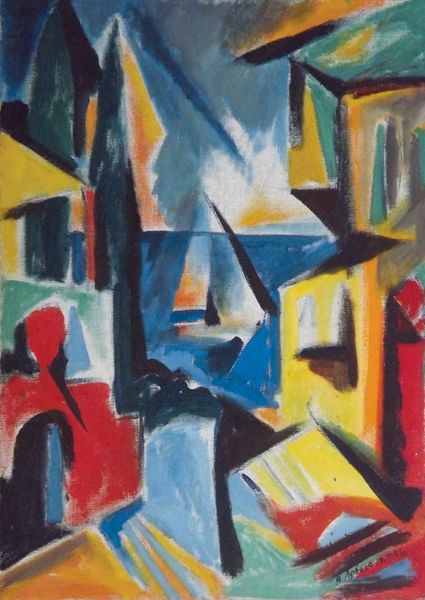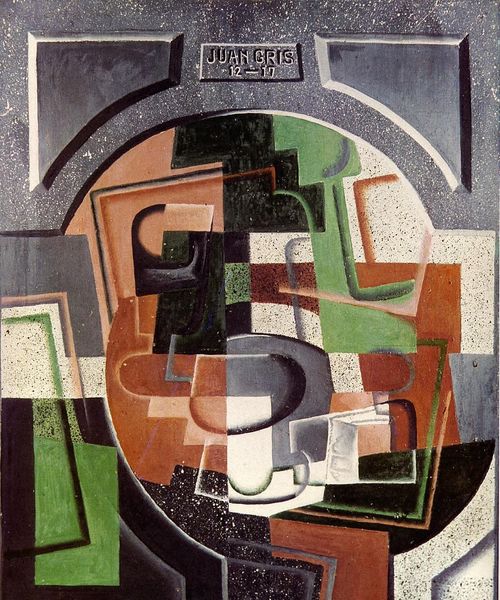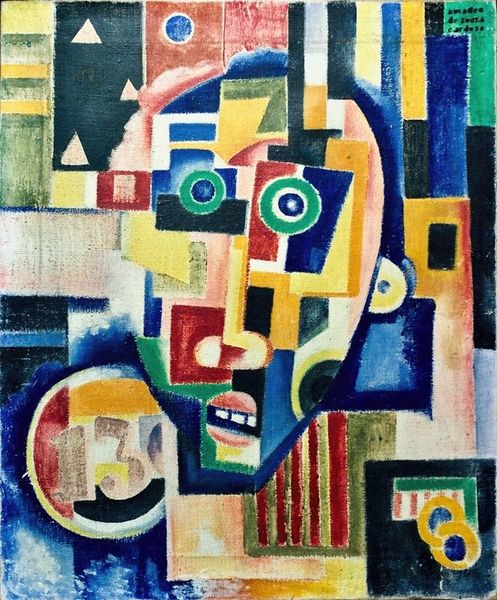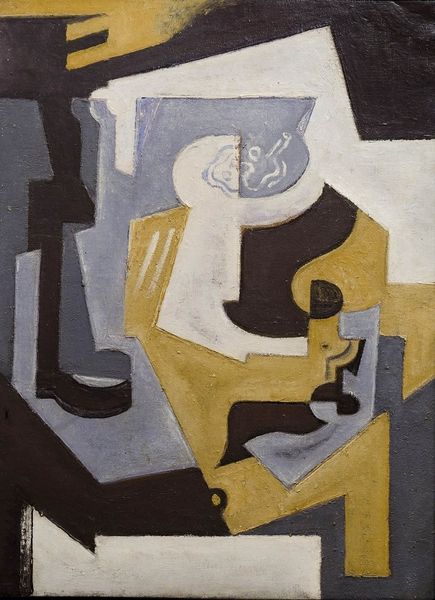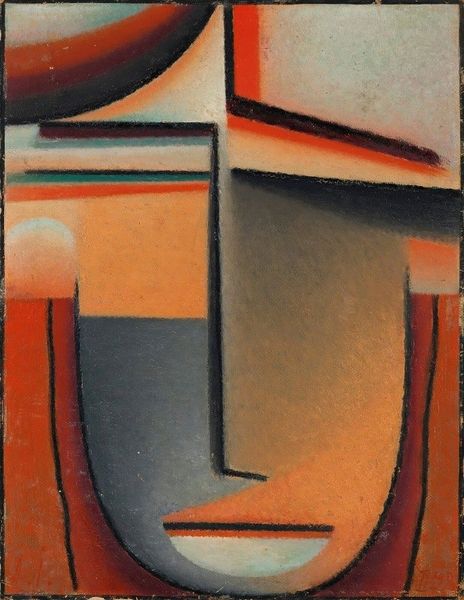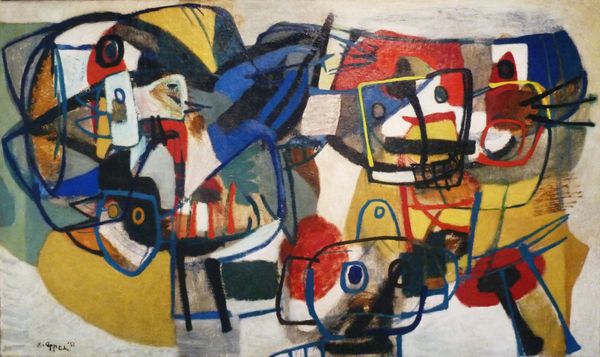
painting, oil-paint
#
cubism
#
painting
#
oil-paint
#
geometric
#
abstraction
Copyright: Public domain
Curator: The painting before us, “Painting IV (Mechanical Abstraction),” was crafted by Morton Schamberg in 1916. Schamberg, though tragically short-lived, played a crucial role in introducing European modernism to America. What springs to mind when you first see this piece? Editor: It’s got a sort of…retro-futuristic vibe, right? Like something you'd find on the cover of an old sci-fi pulp magazine. Kind of robotic and kind of…elegant, if that makes sense? The subdued palette, almost industrial, gives it that weight. Curator: I find your observation particularly perceptive. Schamberg and his contemporaries were deeply engaged with the aesthetics of machinery—it represented progress and transformation. You see these forms distilled into geometric shapes. Notice the repeated use of circles, rectangles, and interlocking components, meant to invoke a machine aesthetic. Editor: Right, like cogs and pistons abstracted down to their simplest visual essence. It feels very much of its time, the kind of optimism tempered with a little bit of existential dread perhaps about where all this progress might lead. Am I overthinking? Curator: Not at all. Consider the historical backdrop. This piece was created amidst the turmoil of World War I. Artists, like Schamberg, grappled with themes of mechanization and dehumanization. These forms and angles, while celebrating mechanical power, might also hint at its potential to inflict destruction, an inherent visual dichotomy. Editor: So the coldness I'm feeling isn’t unintentional, or something solely "me." There’s a deeper cultural anxiety reflected in the sharp lines and almost clinical execution. Like he’s taking apart the idea of machines to see what they're really made of. Makes you wonder if he succeeded, if the symbolism here really holds, especially over a century later? Curator: And in dissecting those ideas, Schamberg immortalized them—in his style, the past became a prediction. Editor: So true! Well, now I’m seeing more than just a robot in an old magazine. Now I’m seeing… history in a gear.
Comments
No comments
Be the first to comment and join the conversation on the ultimate creative platform.
